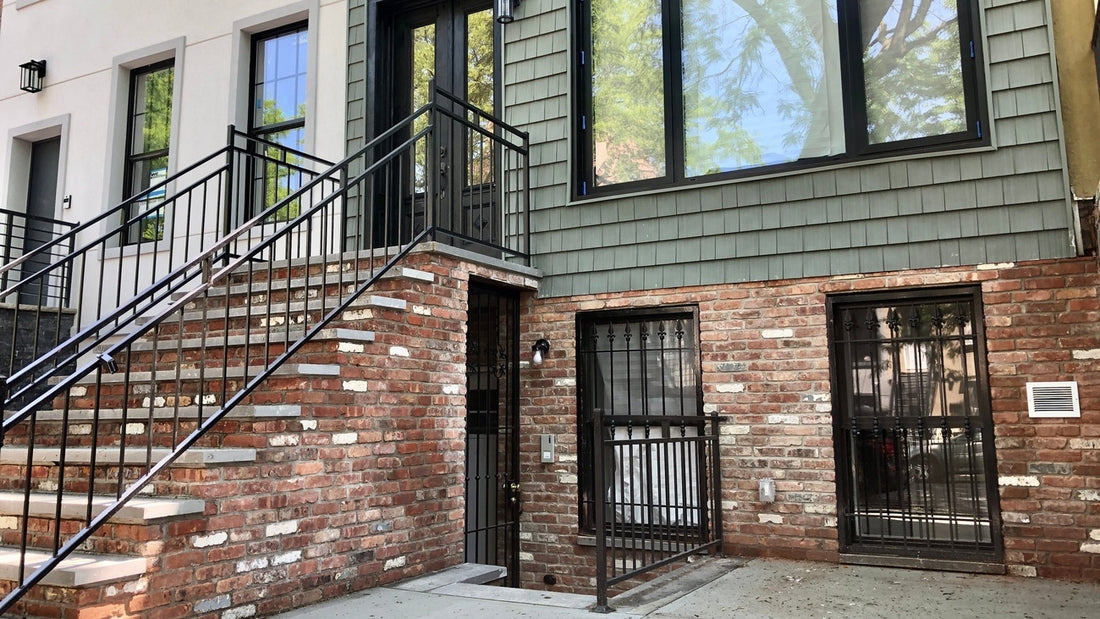The art of brick making dates back 5,000 years to the ancient walls of Jericho. Right up until the Industrial Revolution, hand-crafted brick making techniques were constantly refined by masons seeking a lighter, more portable alternative to stone.
By the Renaissance, bricks adorned the facades of Europe's grand capitals and it didn't take long for the young country of America to learn to use locally made bricks as foundations for its own bustling 17th century cities, such as New York.
In its natural state, New York's original Hudson River clay produced a unique light pink brick. Local brick makers added iron oxide to its outside sandy layer during the molding process, to give their bricks a red glow reminiscent of Britain's Georgian architecture. Perhaps the pigment was a sentimental nod from the new country's settlers to their homeland because the rustic look of New York's red bricks held long-lasting appeal.
By the 1830s, Hudson River brick had such a far-reaching market that local bricks were tugged up-river and through the Erie Canal to building destinations nationwide. The following generation of the brick industry's inventors and engineers mechanized their processes to create New York area bricks with the uniformity needed to build Manhattan's early 20th century skyscrapers, and Gotham was born.
If we stand among its hundred-year-old architectural gems now, it's hard to imagine that 19th century New York City was still largely constructed of wood, but in fact the famous fires of 1835 and 1845 completely destroyed lower Manhattan. After them, strictly enforced building codes were written that ensured future fireproof construction, and local New York brick made its formal debut on every new facade.
Horizontal patterns of original Hudson River brick are the most traditional application found on Manhattan's buildings but decorative brick motifs also abound in Brooklyn's Arts and Crafts-era architecture.
Today, we see reclaimed original Hudson River red brick on many of New York City's most skillfully renovated contemporary homes. We spoke with New York-based designer and builder Joseph Aghelian from Park Slope Associates about his use of reclaimed Hudson River brick.
WHY DID YOU DECIDE TO USE RECLAIMED BRICK FOR YOUR RECENT BUSHWICK, BROOKLYN PROJECT?

Jefferson Street, its facade was a plain beige stucco that didn't reflect the community's history. I already knew of the antique brick facades on Bushwick's historic homes, but I was also delighted to discover subtle, elegant combinations of bricks on Jefferson Street's new luxury apartment complex exteriors. My client's vision was to make their home a truly authentic contribution to the neighborhood, and reclaimed New York brick achieves that goal.
DID THE AREA'S INDUSTRIAL PAST ALSO INFLUENCE YOUR DECISION?

Definitely! New Yorkers have all heard of Bushwick's thriving craft breweries but not everyone knows about the famous old beer brands, such as Rheingold, that once called Bushwick home. These grand dames of nineteenth century industrial architecture were constructed of local brick, and 200 years ago brick making itself was a large industry along the area's kills and creeks!
WHY DID YOU CHOOSE CHIEF BRICKS AS YOUR RESOURCE?
I wanted to match that rustic vibe. Alkis at Chief Bricks was able to combine a full array of mixed batches and colors to accomplish the most authentic look. Each reclaimed brick has its own character, so there's a quality that can never be achieved in a facade of new material. The diversity of these hand chosen reclaimed bricks from Chief Bricks makes the home on Jefferson Street an homage to Bushwick's rich history and new dynamic energy.

